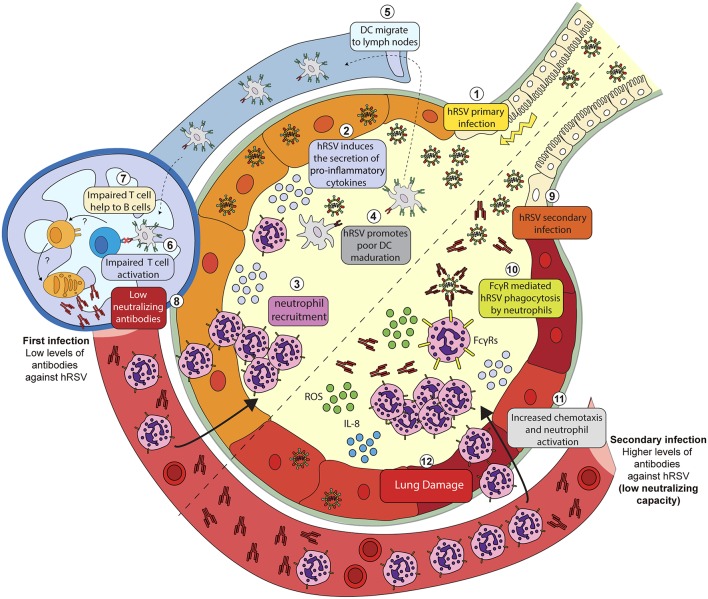Figure 1.
Putative mechanisms explaining hRSV-induced inflammation due to hRSV-IC interaction with Fc-gamma receptors expressed on the surface of neutrophils. During a primary infection (1) hRSV induces the secretion of pro-inflammatory cytokines (2) and chemokines that promote neutrophil recruitment to the lungs and the airways (3). During infection, hRSV is phagocyted by DCs and impair its maturation (4). Infected DCs migrate to lymph nodes (5) but fail to activate T cells (6). By a poorly understood mechanism, T cells fail to help naïve B cells (7) and promote the proliferation of plasma cells that produce anti-hRSV antibodies with a low neutralizing capacity (8). Serum antibodies produced after a primary hRSV infection can opsonize hRSV during secondary infection (9). Opsonized hRSV is then phagocyted by neutrophils through FcγRs (10). The infection of these cells triggers the release of cytokines such as IL-8 that promote the activation and the recruitment of neutrophils (11). Activated neutrophils then release metabolic products, i.e., reactive oxygen species (ROS) that promote lung damage and inflammation (12).

